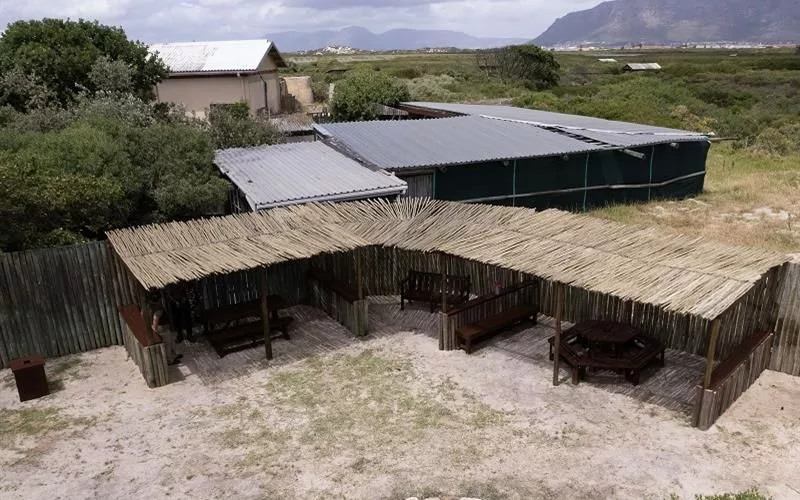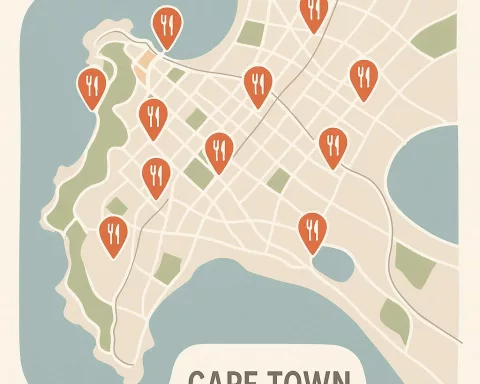What is the South African Aeration Experiment for Mitigating Pollution in Diep River?
The South African City Council has launched a six-month experimental venture to mitigate pollution in Diep River and Milnerton Lagoon. This pioneering initiative, the first in the South African region, seeks to restore the critical aquatic ecosystems by enhancing their oxygen content. The project involves using four aerators to increase oxygen levels in the river and combat the build-up of oxygen-depleted sediment and hydrogen sulphide production.
In an era marked by mounting environmental issues, South Africa’s City Council has launched a six-month experimental venture to mitigate pollution in Diep River and Milnerton Lagoon. This pioneering initiative, the first in the South African region, seeks to restore the critical aquatic ecosystems by enhancing their oxygen content.
The Degradation of Diep River
The Diep River, a significant lifeline that stretches from the Riebeek Kasteel Mountains to the sea, is suffering under the severe impact of pollution. The most damaging outcome of this pollution is a significant reduction in the river’s levels of dissolved oxygen. This oxygen deficiency is caused by an excess of organic particulate matter, which triggers a bacterial explosion. The resulting bacterial invasion consumes the available oxygen, leaving some parts of the river struggling for oxygen content.
The crisis exacerbates as the oxygen-deprived bacteria switch to anaerobic respiration, which leads to the production of hydrogen sulphide. This compound is responsible for the unpleasant smell that affects the residents living along Diep River and Milnerton Lagoon.
Impact of Rainfall and Tidal Interchange
The high rainfall in September had both positive and negative effects. The increased water flow reshaped the Milnerton Lagoon’s mouth, permitting a substantial influx of oxygen-rich seawater into the lower sections of the system. However, the oxygen levels in the Diep River above Woodbridge Island and during the summer months remained disappointingly low due to a predicted decrease in tidal interchange.
In response to this environmental crisis, a group of esteemed experts proposed the creative solution of oxygenating the Diep River. This short-term restorative measure, deemed the most feasible under the given conditions, aims to combat the build-up of oxygen-depleted sediment and consequent hydrogen sulphide production.
The Launch of Oxygenation Initiative
A team of four aerators was deployed and installed at the beginning of this six-month experiment. “We have been meticulously planning this deployment. The objective is to test whether actively enhancing the oxygen levels can control the hydrogen sulphide production and, hopefully, decrease the resulting unpleasant smell,” declared the City’s Deputy Mayor, Alderman Eddie Andrews.
An attentive eight-week measurement of the river and lagoon system’s oxygen levels was carried out at different locations before installing the aerators, providing a solid foundation for this initiative.
However, it’s essential to note that this oxygenation trial is a bold move in an open river system in South Africa, which makes the outcome uncertain. “We are optimistic that this experiment will deliver positive results, but we are venturing into unfamiliar territory. Only by carrying out this unprecedented trial can we assess its effectiveness and potential issues,” stated Alderman Andrews. He reassured that any adverse effects would trigger a reevaluation of the experiment, including its possible discontinuation.
An Approved Diep River Estuary Management Plan
This audacious endeavor follows the approval of a revised Diep River Estuary Management Plan, an inclusive guide for managing the estuary, which covers approximately 900 hectares. The plan, endorsed by the City Council and the Western Cape Government, provides a practical strategy for managing environmental stressors within the urbanized areas of Milnerton, Table View, and their surroundings.
This groundbreaking project involved extensive consultations with external experts, independent scientists specializing in coastal and estuarine science, and key City departments. In addition, it allowed for public commentary, demonstrating a commitment to both environmental protection and public engagement.
In this significant venture of scientific exploration and environmental conservation, the City Council is courageously venturing into unknown waters. The potential impact of this aeration experiment could rejuvenate the Diep River, offering a beacon of hope in our contemporary fight against environmental pollution.












